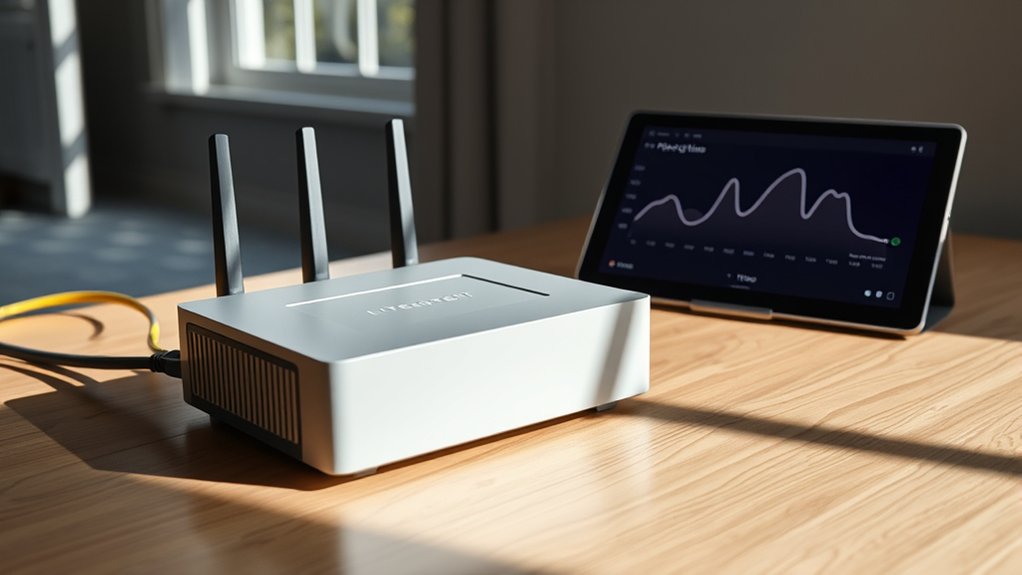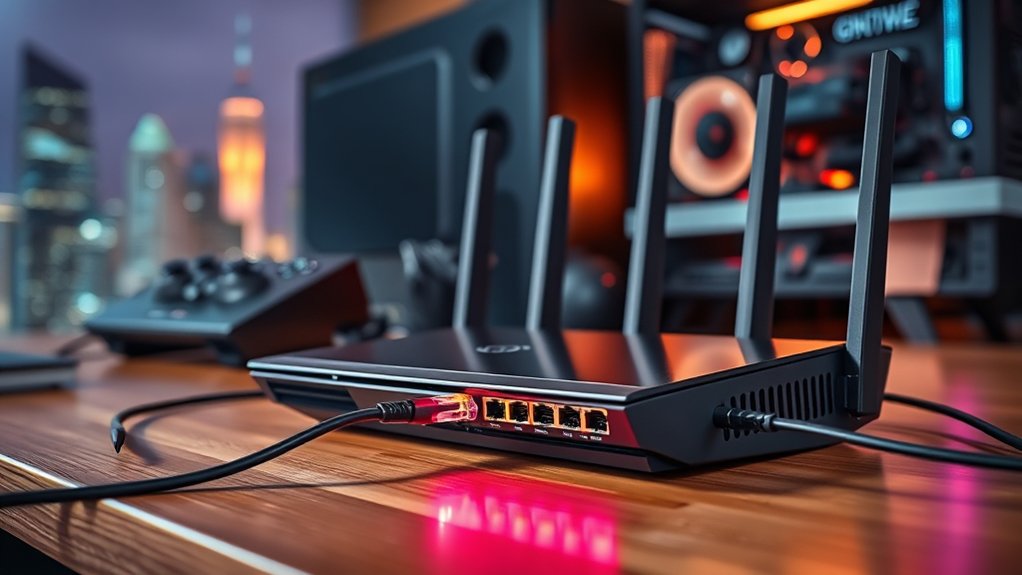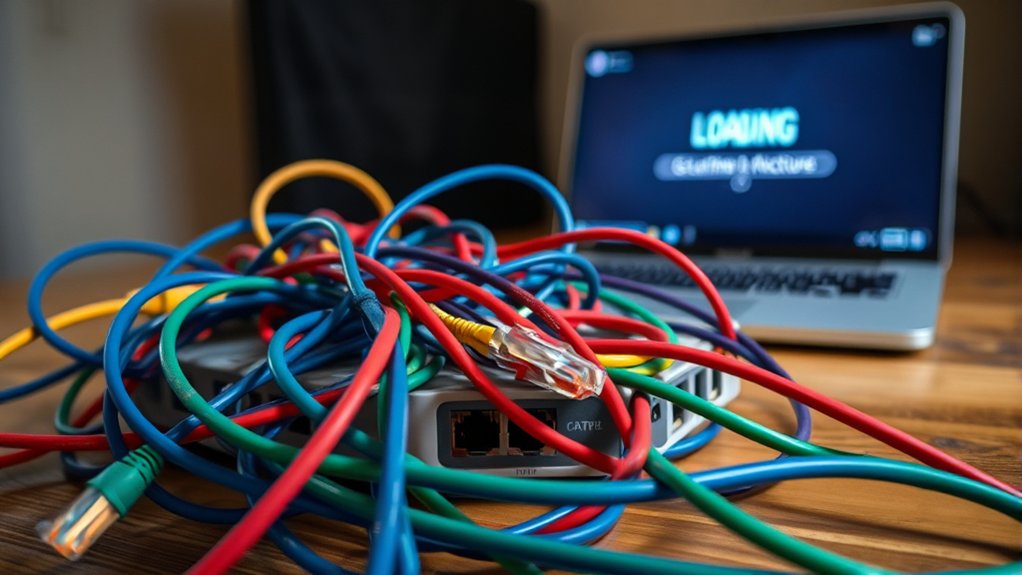To improve internet ping times, individuals should invest in network infrastructure upgrades, such as replacing outdated routers and utilizing fiber internet. A wired Ethernet connection offers greater stability and lower latency than Wi-Fi. Implementing Quality of Service (QoS) can prioritize gaming applications and adjusting firewall settings may further reduce latency. Furthermore, keeping software and drivers updated guarantees peak performance. These strategies collectively improve connectivity; further details on optimizing network settings can yield even better results.

In an era where online activities such as gaming and streaming are increasingly prevalent, improving internet ping times has emerged as a critical concern for users seeking peak performance. As latency issues can severely affect user experiences, particularly in competitive gaming, several strategies can be implemented to boost connectivity and minimize delays.
Firstly, upgrading network infrastructure plays a pivotal role. Users should assess their routers and modems, discarding outdated equipment that does not support modern standards. For instance, utilizing fiber internet, such as Tachus Fiber Internet, can provide low latency and symmetrical speeds, making it a prime choice for activities demanding high-speed data transfers. Additionally, choosing closer game servers can significantly reduce travel time and latency, which is essential for a smoother gaming experience. Understanding that network latency can be influenced by geographic distance and hardware performance can also inform smarter choices in infrastructure. It’s also crucial to recognize that poor network infrastructure can dramatically increase latency levels.
In addition, wired connections through Ethernet cables are considerably faster and more stable than Wi-Fi, effectively reducing ping times.
Equally important is optimizing network settings. Implementing Quality of Service (QoS) protocols allows prioritization of critical applications, ensuring that activities like gaming receive necessary network resources. Likewise, adjusting firewall settings to create exceptions for gaming applications can mitigate unnecessary latency caused by intrusive security checks.
Moreover, removing redundant protocols and conducting regular traffic monitoring can improve overall network efficiency.
Regular software and driver updates contribute to enhanced latency. Keeping the operating system, firmware, and network drivers updated addresses compatibility issues while increasing network performance. Performance improvements embedded in updates are designed to reduce latency, thereby providing users with a smoother experience.
Regular updates to software and drivers are essential for improving network performance and reducing latency for a smoother online experience.
Finally, effective network congestion management is crucial. Users can limit background applications, close unused devices, and schedule bandwidth-intensive activities during non-peak hours to maintain steady speeds.
Utilizing network monitoring tools facilitates the identification of congestion issues, enabling proactive management of traffic loads.
Frequently Asked Questions
What Is the Ideal Ping Time for Online Gaming?
The ideal ping time for online gaming varies by genre. For competitive games such as first-person shooters (FPS), a ping below 20 milliseconds is considered exceptional.
Typically, a ping range of 20 to 50 milliseconds offers a satisfactory experience across most gaming types.
Nevertheless, pings exceeding 100 milliseconds often result in noticeable delays, rendering fast-paced games unplayable.
Consequently, understanding these benchmarks assists gamers in evaluating their latency requirements effectively.
How Does Distance to Server Affect Ping Times?
The distance to a server markedly affects ping times, as latency increases with geographical separation.
According to experts, every 1000 kilometers contributes an approximate 8 milliseconds of latency.
Moreover, network path complexities, including the routing of data through various cables, exacerbate this delay.
In addition, the speed of light imposes a fundamental limit on how quickly information can travel, further complicating latency issues for users connecting to distant servers.
Can a VPN Reduce Ping Times?
The utilization of a Virtual Private Network (VPN) can potentially reduce ping times in gaming scenarios. By connecting to servers closer to the game servers, latency decreases, allowing for smoother gameplay.
Additionally, advanced protocols such as WireGuard or NordLynx improve connection speeds through optimization. Nevertheless, VPNs can introduce latency as a result of encryption processes, highlighting the significance of selecting high-speed, gaming-optimized services to achieve effective results.
Does Upgrading Hardware Improve Ping Times?
Upgrading hardware can lead to improved ping times, though the extent of the improvement may vary.
High-quality routers optimize network traffic, resulting in lower latency. For instance, modern routers can decrease ping by up to 30% when utilizing firmware updates.
Furthermore, using Ethernet cables like Cat 6 supports faster speeds with reduced latency.
Yet, although hardware upgrades improve connectivity, other variables such as internet speed and server distance likewise have a considerable effect on ping performance.
Is It Possible to Completely Eliminate Ping?
It is not possible to completely eliminate ping, as inherent latency exists in internet communication. Factors such as distance between devices, network infrastructure quality, and device processing capabilities contribute to this unavoidable delay.
According to experts, even with advancements in technology, some latency remains. For example, fiber optic connections can reduce ping times considerably, yet they cannot eradicate latency entirely, highlighting the limitations of both technology and geography in achieving zero ping.









